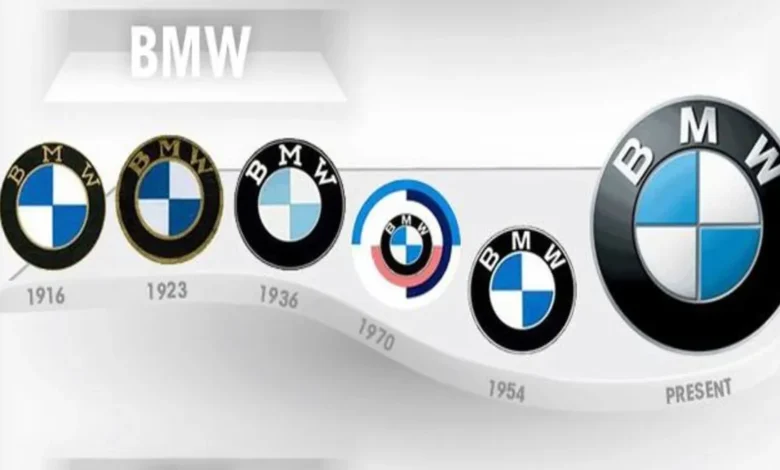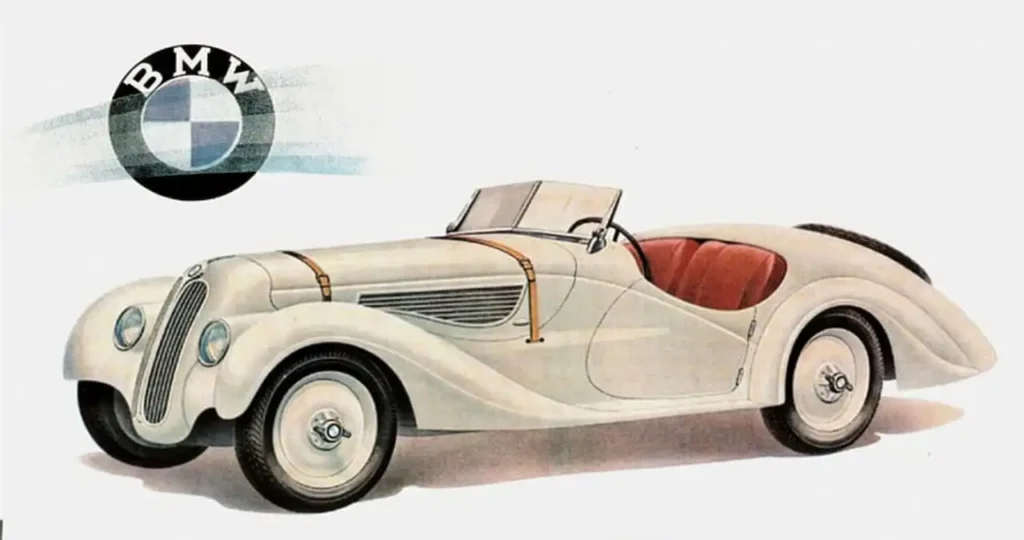1936 BMW Logo: A Look Back at the Year That Defined the Brand’s Visual Identity

The BMW logo is one of the most recognizable symbols in the automotive world. Its iconic circular design, featuring alternating blue and white quadrants, has become synonymous with luxury, performance, and engineering excellence. But few people know the fascinating story behind the 1936 BMW logo, a pivotal year that solidified the brand’s visual identity and set the stage for its global recognition.
In this article, we’ll take a deep dive into the history, design, and significance of the 1936 BMW logo. We’ll explore how this emblem evolved, what it represented at the time, and why it continues to be a cornerstone of BMW’s branding today.
The Origins of BMW: A Brief History

Before 1936 BMW Logo we delve into the 1936 logo, it’s essential to understand the origins of BMW itself. The company was founded in 1916 as Bayerische Flugzeugwerke AG (Bavarian Aircraft Works) and initially focused on producing aircraft engines. After World War I, the Treaty of Versailles forced Germany to halt aircraft production, prompting the company to shift its focus to motorcycles and, eventually automobiles.
In 1917, the company was renamed Bayerische Motoren Werke GmbH (Bavarian Motor Works), and the first iteration of the BMW logo was introduced. The logo featured a circular design with the letters “BMW” at the top and a black ring surrounding the inner circle. The inner circle was divided into four quadrants, with alternating blue and white colors inspired by the Bavarian flag.
The Evolution of the BMW Logo Leading Up to 1936
The BMW logo underwent several subtle changes in the years following its introduction. The early versions of the logo were more intricate, with thicker borders and a more detailed typeface. However, the core elements—the circular shape, the blue and white quadrants, and the BMW lettering—remained consistent.
By the mid-1930s, BMW had established itself as a leading manufacturer of motorcycles and was making strides in the automotive industry. The company’s growing success necessitated a logo that was not only visually appealing but also easily recognizable and reflective of its brand values.
The 1936 BMW Logo: A Defining Moment
The year 1936 marked a significant turning point for BMW’s visual identity. The company introduced a refined version of its logo, which would go on to become the foundation for all future iterations. Here’s what made the 1936 BMW logo stand out:
1. Simplified Design
The 1936 logo featured a cleaner, more streamlined design compared to its predecessors. The black outer ring was thinner, and the lettering was updated to a more modern, sans-serif typeface. This simplification made the logo more versatile and easier to reproduce on various materials, from vehicles to marketing materials.
2. Emphasis on the Blue and White Quadrants
The blue and white quadrants, inspired by the Bavarian flag, were given greater prominence in the 1936 logo. The colors were more vibrant, and the quadrants were slightly more prominent, making the logo more visually striking. This change reinforced BMW’s connection to its Bavarian roots and emphasized its commitment to quality and craftsmanship.
3. Symbolism of Motion and Progress
The circular design of the logo was often interpreted as a representation of a spinning propeller, a nod to BMW’s origins in aircraft manufacturing. This symbolism resonated with the brand’s focus on innovation, speed, and progress, values that were central to its identity in 1936 and remain relevant today.
The Cultural and Historical Context of 1936
To fully appreciate the significance of the 1936 BMW logo, it’s important to consider the cultural and historical context of the time. The 1930s were a period of rapid technological advancement and social change, particularly in Germany. BMW was at the forefront of this transformation, producing cutting-edge motorcycles and automobiles that captured the public’s imagination.
The 1936 logo reflected the optimism and ambition of the era. It was a symbol of modernity and sophistication, qualities that resonated with BMW’s target audience. At the same time, the logo’s connection to Bavarian heritage provided a sense of stability and tradition, balancing the brand’s forward-looking vision with its rich history.
The Legacy of the 1936 BMW Logo
The 1936 BMW logo set the standard for all future iterations of the emblem. While the logo has undergone minor updates over the years—such as changes to the typeface and shading—the core design has remained remarkably consistent. This consistency has helped BMW build a strong, cohesive brand identity that is instantly recognizable worldwide.
1. Global Recognition
The 1936 logo played a crucial role in establishing BMW as a global brand. Its clean, timeless design transcended cultural and linguistic barriers, making it easily identifiable in markets around the world.
2. A Symbol of Quality and Innovation
The logo’s association with BMW’s high-performance vehicles has made it a symbol of quality and innovation. Whether emblazoned on a luxury sedan or a high-speed motorcycle, the logo conveys a sense of excellence and precision.
3. Enduring Appeal
Nearly a century after its introduction, the 1936 BMW logo continues to captivate audiences. Its enduring appeal is a testament to the power of thoughtful design and the importance of staying true to one’s roots while embracing change.
Fun Facts About the 1936 BMW Logo
- The myth of the Propeller: While the logo’s circular design is often associated with a spinning propeller, BMW has clarified that this interpretation was not part of the original design intent. However, the myth persists and has become an integral part of the logo’s lore.
- Color Consistency: The blue and white colors of the logo have remained virtually unchanged since 1936, a rarity in the world of branding.
- Versatility: The 1936 logo’s simple yet elegant design made it suitable for a wide range of applications, from vehicle grilles to advertisements.
Conclusion
The 1936 BMW logo is more than just a visual emblem; it’s a symbol of the brand’s rich history, innovative spirit, and unwavering commitment to excellence. By refining its design and emphasizing its core elements, BMW created a logo that has stood the test of time and continues to inspire admiration nearly a century later.
As we look back at the year 1936, it’s clear that this was a defining moment in BMW’s journey. The logo introduced that year not only shaped the brand’s visual identity but also laid the foundation for its global success. Today, the BMW logo remains a powerful reminder of the brand’s heritage and its relentless pursuit of progress.
Whether you’re a car enthusiast, a design aficionado, or simply someone who appreciates the power of branding, the story of the 1936 BMW logo is one that resonates across generations. It’s a testament to the enduring power of great design and the importance of staying true to one’s roots while embracing the future.
FAQS
- What inspired the design of the 1936 BMW logo?
- The 1936 BMW logo was inspired by the Bavarian flag, featuring alternating blue and white quadrants. The circular design was also often interpreted as a spinning propeller, reflecting BMW’s origins in aircraft manufacturing, though the company has clarified that this was not the original intent.
- Why was 1936 a significant year for the BMW logo?
- 1936 marked a pivotal year for BMW’s visual identity. The logo introduced that year featured a cleaner, more modern design that emphasized the blue and white quadrants and streamlined typography. This version became the foundation for all future iterations of the logo.
- Has the BMW logo changed since 1936?
- While the core elements of the BMW logo have remained consistent since 1936, there have been minor updates over the years, such as changes to the typeface, shading, and proportions. However, the circular shape and blue-and-white color scheme have stayed the same.
- What does the BMW logo symbolize?
- The BMW logo symbolizes the brand’s Bavarian heritage, innovation, and commitment to quality. The blue and white quadrants represent the colors of the Bavarian flag, while the circular design is often associated with motion and progress, reflecting BMW’s engineering excellence.
- Why is the 1936 BMW logo still relevant today?
- The 1936 BMW logo remains relevant because of its timeless design and strong association with the brand’s values of luxury, performance, and innovation. Its consistency over the decades has helped BMW build a globally recognizable and trusted brand identity





